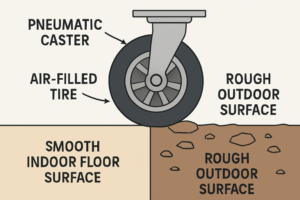Among the world’s most admired and versatile trees, the cypress tree stands as a symbol of strength, endurance, and timeless beauty. Known for its tall stature, aromatic wood, and elegant evergreen foliage, the cypress has been revered for centuries across different cultures and climates. Whether seen lining Mediterranean landscapes, adorning gardens in North America, or standing majestically near lakes and swamps, the cypress tree embodies both resilience and grace.
This comprehensive guide explores the cypress tree in depth—its characteristics, types, growth habits, environmental importance, and economic value. We will also discuss planting techniques, soil requirements, pruning methods, and the wide range of applications for its durable wood. From ancient symbolism to modern landscaping, the cypress tree remains one of nature’s finest contributions to human life and the environment.
1. What Is a Cypress Tree?
The term cypress tree refers to several species of coniferous trees belonging to the family Cupressaceae. These evergreen trees are well known for their needle-like or scale-like leaves, woody cones, and fragrant timber. Cypress trees grow in various climates—from warm coastal plains to cool mountain slopes—making them highly adaptable species.
They are often recognized by their straight trunks, symmetrical shapes, and ability to retain foliage throughout the year. Depending on the species, a mature cypress tree can range from 15 to over 120 feet tall, with some varieties developing wide, flared bases when growing near wetlands.
Cypress trees are also among the oldest cultivated species in human history, admired for their symbolic meanings of immortality, mourning, and eternal life. In ancient cultures, they were planted in cemeteries and temples, while modern landscapes use them as windbreaks, ornamental trees, and timber sources.
2. Major Species of Cypress Trees
Cypress trees are not confined to one single species; they encompass several types found around the world. Below is a detailed look at some of the most prominent species, each adapted to its specific habitat.
| Species Name | Common Name | Habitat/Region | Distinct Characteristics |
|---|---|---|---|
| Cupressus sempervirens | Mediterranean Cypress | Southern Europe, Western Asia | Tall, columnar shape, dark green foliage |
| Taxodium distichum | Bald Cypress | Southeastern USA | Deciduous, thrives in swampy areas, “knees” above roots |
| Cupressus macrocarpa | Monterey Cypress | California coast | Spreading branches, dense canopy, salt tolerance |
| Chamaecyparis obtusa | Hinoki Cypress | Japan | Compact, fragrant wood, used in temples |
| Cupressus arizonica | Arizona Cypress | Southwestern USA | Drought-tolerant, bluish foliage |
| Cupressus lusitanica | Mexican Cypress | Central America | Fast-growing, used for timber and windbreaks |
| Callitris columellaris | Australian Cypress | Australia | Small cones, aromatic wood, termite-resistant |
Each of these species brings its own set of benefits, whether for ornamental beauty, timber value, or environmental sustainability.
3. Physical Characteristics of Cypress Trees
Cypress trees are evergreen conifers, meaning they retain their leaves year-round (except for a few deciduous species like the bald cypress). Their appearance is distinctive and easily recognizable by the following traits:
- Leaves: The leaves are small and scale-like, overlapping tightly along the stems. They emit a pleasant, resinous aroma when crushed.
- Bark: The bark varies from smooth in young trees to deeply furrowed and fibrous in older specimens, often peeling in strips.
- Cones: Cypress trees produce small, woody cones that serve as seed containers. Depending on the species, cones may take several years to mature.
- Roots: Many cypress trees, especially the bald cypress, have specialized roots that grow above waterlogged soil known as knees, which help with oxygen intake.
- Wood: Cypress wood is lightweight, aromatic, and highly resistant to decay, making it valuable for furniture, boats, and outdoor construction.
4. Ecological Importance of Cypress Trees
Cypress trees contribute significantly to ecological balance and environmental sustainability. Their strong, deep root systems prevent soil erosion, especially along riverbanks and wetlands. The dense canopy provides shelter for birds, insects, and small mammals, while the fallen leaves decompose to enrich the soil with organic matter.
Moreover, cypress trees play a role in carbon sequestration—absorbing large amounts of carbon dioxide and releasing oxygen. This helps reduce greenhouse gases and combat climate change. In swampy areas, bald cypress trees act as natural water filters, trapping sediments and improving water quality. Their resilience in both drought-prone and flood-prone regions makes them critical to maintaining biodiversity.
5. Growth Conditions and Requirements
To cultivate healthy cypress trees, understanding their preferred growing conditions is essential. While different species may vary slightly in their requirements, most cypress trees thrive under the following conditions:
| Factor | Ideal Condition | Explanation |
|---|---|---|
| Sunlight | Full sun (6+ hours daily) | Promotes healthy foliage and strong trunk development |
| Soil Type | Well-drained, loamy, or sandy soil | Prevents root rot and encourages balanced moisture |
| Watering | Moderate to high (depending on species) | Bald cypress prefers moist soil; Mediterranean cypress prefers dry |
| Temperature Range | 10°C – 35°C | Some species tolerate frost; others prefer warm climates |
| pH Level | Slightly acidic to neutral (6.0–7.5) | Ensures nutrient absorption and stable root health |
| Spacing | 10–15 feet apart | Allows full canopy expansion without overcrowding |
When grown in favorable conditions, cypress trees demonstrate impressive growth rates, often reaching maturity in 10–15 years, depending on the species.
6. How to Plant and Care for Cypress Trees
Planting and maintaining a cypress tree requires patience, planning, and proper care. Here’s a detailed step-by-step guide:
1. Site Selection
Choose an area that receives full sunlight throughout the day. Avoid locations prone to waterlogging unless you’re planting swamp-loving species like the bald cypress.
2. Soil Preparation
Loosen the soil to a depth of 12–18 inches and mix in organic compost to improve fertility and aeration. Cypress trees adapt to various soils but thrive best in well-drained substrates.
3. Planting the Tree
Dig a hole twice the width of the root ball and slightly shallower than its depth. Place the tree upright, fill the hole with soil, and water thoroughly to eliminate air pockets.
4. Watering
During the first year, water deeply once or twice a week to establish strong roots. Once established, reduce watering frequency depending on the climate.
5. Mulching
Add a 2–3 inch layer of mulch around the base to retain moisture and regulate temperature, keeping it a few inches away from the trunk.
6. Pruning
Prune annually to remove dead or weak branches, and shape the canopy if grown ornamentally. Avoid excessive pruning, as it can affect growth.
7. Fertilization
Feed young trees annually with balanced fertilizer (e.g., 10-10-10 NPK). Mature trees often thrive without additional feeding.
7. Uses and Economic Importance of Cypress Trees
Cypress trees have immense practical value across industries, from construction to cosmetics. The following table summarizes their diverse applications:
| Category | Use | Description |
|---|---|---|
| Timber Industry | Furniture, flooring, boats | Cypress wood resists decay, ideal for outdoor structures |
| Landscaping | Windbreaks, privacy screens | Popular for hedges and ornamental planting |
| Essential Oils | Perfumes, aromatherapy | Cypress oil extracted from leaves and cones has calming fragrance |
| Cultural and Religious | Symbolic planting in temples and cemeteries | Represents eternal life and spiritual strength |
| Environmental | Soil stabilization, carbon absorption | Reduces erosion and purifies air and water |
Because of its beauty and durability, cypress wood is often compared to cedar and teak in value. It is also lightweight, which makes it ideal for carving and boat-making.
8. Symbolism and Cultural Significance
The cypress tree holds deep symbolic meanings in various cultures. In ancient Greece and Rome, it was associated with mourning and immortality, often planted in cemeteries as a sign of eternal life. In Eastern cultures, it symbolizes longevity, strength, and purity. In Christianity, it represents resurrection and eternal hope.
In modern times, cypress trees are widely used in memorial gardens, parks, and temples. Their upright, unbending form serves as a visual metaphor for resilience, reminding humanity of the connection between nature and spiritual endurance.
9. Common Pests and Diseases
Though hardy, cypress trees are not immune to certain pests and diseases. Early detection and preventive care are crucial for maintaining their health.
| Problem | Symptoms | Prevention and Treatment |
|---|---|---|
| Cypress Canker (Seiridium spp.) | Yellowing branches, oozing resin | Prune infected limbs, disinfect tools, improve air circulation |
| Bagworms | Web-like bags on leaves | Manually remove bags, use eco-friendly insecticides |
| Root Rot | Wilting foliage, foul-smelling roots | Ensure proper drainage, avoid overwatering |
| Spider Mites | Fine webs, discolored foliage | Regular watering, insecticidal soap spray |
| Aphids | Sticky residue on leaves | Use neem oil or natural predators like ladybugs |
By maintaining balanced watering, good soil health, and proper pruning, most of these issues can be prevented naturally.
10. Lifespan and Growth Rate
Cypress trees are known for their longevity. Many species can live for several centuries under favorable conditions. The Mediterranean cypress, for example, can live over 1,000 years, while the bald cypress is famous for its specimens aged over 2,000 years.
Growth rates vary between species—some, like the Mexican cypress, grow up to 3 feet per year, while others maintain slower, steady growth. With proper care and minimal human interference, cypress trees can become living monuments that outlast generations.
11. Environmental Benefits
Cypress trees provide several environmental benefits, including:
- Air Purification: Their dense foliage absorbs pollutants and releases oxygen.
- Climate Control: Acting as natural windbreaks, they reduce dust and provide cooling shade.
- Erosion Prevention: Their deep roots hold soil together, especially in wetlands or along slopes.
- Habitat Support: Birds, bees, and small animals thrive within their branches.
- Carbon Sequestration: Mature cypress trees can capture significant amounts of carbon dioxide annually.
Thus, planting cypress trees contributes not just to landscape beauty but also to ecological sustainability.
12. Comparison Between Major Cypress Varieties
| Feature | Mediterranean Cypress | Bald Cypress | Monterey Cypress |
|---|---|---|---|
| Leaf Type | Scale-like, evergreen | Needle-like, deciduous | Scale-like, evergreen |
| Growth Habitat | Dry, rocky areas | Swamps, wetlands | Coastal cliffs |
| Height Range | 60–100 ft | 70–120 ft | 40–80 ft |
| Wood Durability | High | Very high | Moderate |
| Cultural Symbolism | Immortality | Renewal | Coastal protection |
| Best Use | Landscaping | Timber, conservation | Windbreaks |
This table helps gardeners and landscapers select the ideal species according to their environment and intended use.
13. Modern Landscaping with Cypress Trees
Cypress trees have become a favorite choice in modern landscaping due to their aesthetic appeal, low maintenance, and adaptability. Designers use them for creating elegant vertical lines, privacy barriers, or accent points. The Mediterranean cypress, for example, is iconic in Italian gardens, while dwarf cypress varieties are popular for bonsai cultivation.
In residential properties, cypress hedges act as natural fences that reduce noise and wind. Their evergreen nature ensures year-round greenery. When planted in rows along driveways or borders, they provide a stately and balanced appearance, enhancing property value and visual harmony.
14. Propagation of Cypress Trees
Cypress trees can be propagated through seeds, cuttings, or saplings.
- Seed Propagation: Seeds are extracted from mature cones and germinated under moist, warm conditions. However, this method is slow and may not produce identical offspring.
- Cuttings: Stem cuttings from healthy branches can be rooted in moist soil or perlite, ensuring a genetically identical clone.
- Saplings/Transplanting: Buying young plants from nurseries is the fastest way to establish new trees.
Propagation success increases when handled during spring or early summer, under moderate temperatures and proper watering.
15. Conservation and Sustainability
Some cypress species, such as the Monterey cypress, have become rare in their native habitats due to deforestation and climate change. Conservation programs worldwide are now focusing on seed banking, habitat restoration, and controlled cultivation to preserve genetic diversity.
Planting cypress trees in urban and rural landscapes not only supports biodiversity but also helps restore ecological balance in degraded environments. Choosing sustainable harvesting methods for timber also ensures that these majestic trees continue to thrive for future generations.
Conclusion
The cypress tree stands as a timeless testament to nature’s artistry and resilience. Its deep roots, durable wood, and graceful foliage make it both a practical and symbolic treasure. Whether admired in sacred temples, cultivated in home gardens, or harvested for its valuable timber, the cypress continues to play an essential role in human civilization.
By understanding its biology, caring for its growth, and respecting its ecological significance, we can ensure that this ancient species continues to enrich our landscapes and our lives. In every towering trunk and fragrant leaf lies a lesson of endurance, adaptability, and balance—a reminder that even in changing times, some forms of beauty remain eternal.
FAQs
1. How tall do cypress trees grow?
Depending on the species, cypress trees can reach between 40 and 120 feet in height. Some, like the bald cypress, grow even taller in swampy environments.
2. Can cypress trees grow in cold climates?
Yes, certain species such as the bald cypress and Arizona cypress can tolerate mild frost, though most prefer warmer climates.
3. How long does a cypress tree live?
Cypress trees are exceptionally long-lived. Many species can live for hundreds or even thousands of years under ideal conditions.
4. What is cypress wood used for?
Cypress wood is prized for its resistance to decay and is used in furniture, boats, outdoor decking, and architectural design.
5. Are cypress trees easy to maintain?
Yes, once established, they require minimal maintenance. They are drought-tolerant, pest-resistant, and adaptable to different soils.









